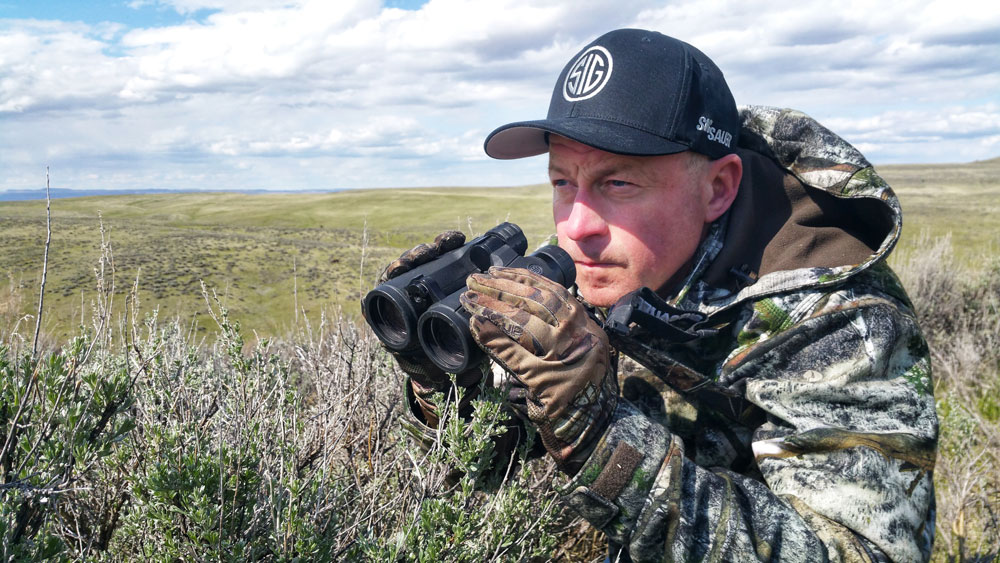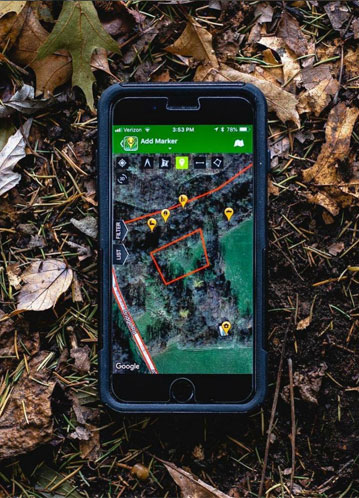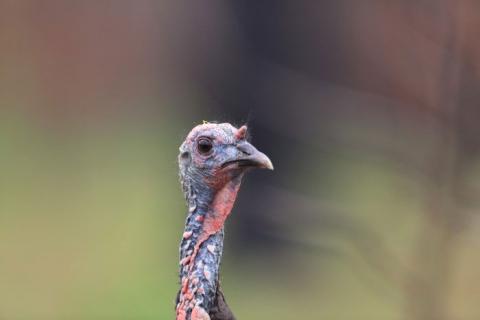provided by John E. Phillips
Mossy Oak ProStaffer Mark Kayser grew up in South Dakota and harvested his first turkey in 1983. He’s spent most of his life there but recently moved to Wyoming. “We hunt the Merriam’s subspecies of wild turkeys and also have some intergrade turkeys. For example, in South Dakota, farm turkeys from the eastern and Rio Grande turkeys were released and crossed with the native Merriam’s. Most of the turkeys we harvest in South Dakota and Wyoming have white-tipped tail feathers and white-tipped feathers on their backs, although some turkeys have sandy-colored, yellow-tipped feathers on their tails and backs.”
Today Merriam’s turkeys live in South Dakota, North Dakota, Idaho, Wyoming, Colorado, Nebraska, Montana, Washington, Oregon, Utah, Arizona, New Mexico and Washington. In South Dakota, Merriam’s live west of the Missouri River in suitable habitat and on prairies with minimal forested habitat in grasslands and can be taken during various seasons beginning April 3rd and continuing through May 31 in some areas. Some of Wyoming’s various turkey seasons open April 12, and some are open until May 31.
Kayser, an outdoor writer and TV host, has written hundreds of magazine articles and has explained on TV shows about turkeys and turkey hunting. The Merriam’s gobbler is one of the most beautiful wild turkeys in the nation and often gobbles more and louder than any other sub-species of wild turkeys. Knowing Kayser’s success in harvesting these fascinating gobblers, learn how Kayser hunts and takes them.

Mark Kayser: Growing up, my family owned property in the Black Hills, which is primarily mountainous terrain. So, as a child, I spent a lot of time hunting mountain Merriam’s. There’s been a really good population of Merriam’s gobblers in South Dakota’s mountains for many, many years, but most of my Merriam’s hunting nowadays is on the plains and creek bottoms.
The Black Hills in western South Dakota are the home to Mount Rushmore, which should tell you the type of mountainous country is in this part of the U.S. with peaks reaching up to more than 7,000 feet high. One of the advantages of hunting here is that you still can find turkeys in the foothills (lower elevations) as well as the higher elevations. My favorite place to hunt in the Black Hills are the western slopes that run down to the Wyoming border with their abundance of timber, as well as chaparral or step-type openings sometimes with sage brush in them. The gobblers on this land tend to roost on the eastern slopes where they can see the sun rise each morning and usually will fly down into some type of opening once they leave the roost. From there, they’ll continue to move downhill, until they find some type of meadow opening with more diverse habitat and insects to eat. Merriam’s gobblers also like to spend their days in the Ponderosa pines eating pine nuts. When I’m hunting in the mountains, I’m basically looking for a mountain meadow or an opening - known as a plateau or a bench on the side of a mountain. We start spotting turkeys the day before we begin hunting.
Merriam’s gobblers don’t roost like eastern turkeys or Rio Grande turkeys do. Instead of having one roost tree, Merriam’s will have multiple roost trees. This characteristic of Merriam’s is why I like to go out the day before I’m planning to turkey hunt to locate turkeys right at or just after sunset. When I’m hunting prairie turkeys, I don’t feel like I have to roost them. But, I’ve found that when you’re hunting in the mountains, you can hunt much more effectively if you find the gobblers the evening before the hunt. Late afternoon I’ll find an opening where I think a turkey will fly down to and mark it on my HuntStand app for a more efficient hunt. I’ll then add a topographical overlay and the next morning use it as a waypoint to know exactly where to start my hunt. I really like this app because I can mark where I’ve roosted turkeys, return to my stand site after dark and get back to my truck – no matter where I end up during my hunt. HuntStand is much like onX.
 I personally like to classify myself as an extra-early turkey hunter. I don’t want to get close to any turkeys if there’s any light that allows them to see me. So, I always plan to sit in the dark for 45 minutes to an hour before I start turkey hunting. I prefer to be in pitch-black darkness, ready to hunt long before the Merriam’s tom even opens his eyes. If shooting light is at 6 a.m., I’ll want to be in the place that I anticipate taking the turkey by 5 a.m. I’ll still be able to see fairly well before shooting light. If the day is clear, most turkeys will be on the ground and moving around before legal shooting time. Gobblers in the Black Hills generally will fly down 5-10 minutes before, after or right at shooting light. Knowing what time shooting light is in the area that you’re hunting is very important to know when you’re expecting the turkeys to hit the ground.
I personally like to classify myself as an extra-early turkey hunter. I don’t want to get close to any turkeys if there’s any light that allows them to see me. So, I always plan to sit in the dark for 45 minutes to an hour before I start turkey hunting. I prefer to be in pitch-black darkness, ready to hunt long before the Merriam’s tom even opens his eyes. If shooting light is at 6 a.m., I’ll want to be in the place that I anticipate taking the turkey by 5 a.m. I’ll still be able to see fairly well before shooting light. If the day is clear, most turkeys will be on the ground and moving around before legal shooting time. Gobblers in the Black Hills generally will fly down 5-10 minutes before, after or right at shooting light. Knowing what time shooting light is in the area that you’re hunting is very important to know when you’re expecting the turkeys to hit the ground.
Most of the time, the turkeys will fly down to the closest green meadow from the roost stand. If I’ve got both of those places marked on my app, 80-90% of the time, I’ll locate the birds. Many of the benches I hunt on will have an old logging road that goes beside, through or around them. These logging roads give me the advantage of reaching my stand much quieter and quicker than if I have to walk through the woods. These roads also provide the gobblers a place to display, strut, drum and spit for the hens – some of the first things the Merriam’s gobblers want to do when they hit the ground.
When the turkeys first start talking in the trees, I don’t call to them. I want to know how many gobblers and how many hens are in the flock. So I listen to them as they wake up and start talking to each other. If I feel like I need to direct those turkeys to the meadow where I’m set up, I may do a little soft calling and lead them to a decoy that I’ve put out on my stand site. I use one of two types of decoys: either an Avian-X or a mounted hen. I like the mounted hen the best, even though it really takes a beating when I’m hunting in mountainous country.
Once the gobblers get on the ground, I ramp up my calling, since the hens will be talking a lot. If the gobbler doesn’t respond, then I forget about him for a while and start challenging the boss hen with some aggressive clucks and cackles. Or, if the gobbler starts to come toward that decoy, and the boss hen is calling aggressively to pull him away, that’s when I really start using my best calls to get him to walk toward me.
Mossy Oak: At what distance do you like to take a shot on the Merriam’s gobbler?
Kayser: I usually won’t take the shot until the turkey is 40 yards away or less from me. I’ve used a lot of different guns to take turkeys, but lately I’ve really enjoyed hunting with a 20-gauge Connecticut Valley Arms (CVA) Single-Shot shotgun with Hornady Turkey Magnum #5 shotgun shells and a JEBS “Head Hunter” ultra-pull turkey choke.
Mossy Oak: Why did you switch from shooting a 12-gauge to using a 20-gauge shotgun?
Kayser: I like the 20-gauge because it’s much lighter than a 12-gauge. Also when I break a 20-gauge open, I can put it in the back of my turkey vest, leaving both of my hands free. Since I do a lot of glassing, I need to use my hands to see the turkeys with my binoculars long before I’m planning to take the shot.
To learn more about Mark Kayser, visit his Facebook page at https://www.facebook.com/markkayseroutdoors/.






























